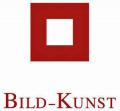Opinion A-G: by way of framing of a work to make it available on a website is no communication to the public even when measures are taken against framing
11-09-2020 Print this page
Case C-392/19 - VG Bild-Kunst. Reference for preliminary ruling Bundesgerichtshof Germany. Opinion of Advocate General Szpunar.
With the consent of the rightholder, a work has been made available on a freely accessible website. A third party has placed this work on his website by way of framing, while the rightholder has taken protection measures against framing. The third party has circumvented these protection measures. In this case, does this constitute "communication to the public" within the meaning of Article 3(1) of the Copyright in the Information Society Directive?
According to Advocate General Szpunar, the embedding in a webpage of works from other websites by means of automatic links (inline linking) requires the authorisation of the holder of the rights in those works. However, embedding by means of clickable links using the framing technique does not require such authorisation, which is deemed to have been given by the rightholder when the work was initially made available. The same applies even where that embedding circumvents technological protection measures against framing adopted or imposed by the rightholder.
"75. To summarise, the case-law of the Court concerning hyperlinks, or more generally the communication of works to the public on the internet, must be understood, in my view, as meaning that a copyright holder, in giving consent for his or her work to be made freely available to the public on a webpage, takes into account the entire public likely to access that webpage, including by means of hyperlinks. Consequently, those links, while constituting acts of communication, since they give direct access to the work, are in principle covered by the authorisation given by the copyright holder at the time of the initial making available of the work and do not require additional authorisation.
91. I am therefore of the view that, in the case of works protected by copyright made freely available to the public on the internet with the authorisation of the copyright holder, the public accessing such works by means of clickable links using the framing technique, including inline frames, must be regarded as forming part of the public which was taken into account by that rightholder when those works were initially made available. Of course, that assessment does not apply in cases where links circumvent access restrictions or in cases where hyperlinks link to works made available to the public without the copyright holder’s authorisation, in which cases the solutions set out, respectively, in the judgments in Svensson and Others and GS Media apply.
129. The situation is quite different in the case of protection measures against framing. Those measures restrict neither access to a work nor even a means of accessing it, but only a manner of displaying it on a screen. They often cause a browser to refuse to open the target page of the link in a frame and then either offer to open that page in a new window or open it automatically in place of the page containing the link. The link then behaves like a standard hyperlink. In those circumstances, there can be no question of a new public, because the public is always the same: the public of the website targeted by the link. There is therefore no analogy with measures restricting access to the work as regards the assessment of the existence of a new public. Thus, quite apart from the fact that the use of such measures only rarely reflects the intention of the copyright holder, those measures do not determine the circle of persons taken into account as the potential public for which the work was made available. The possible circumvention of those measures therefore does not widen that circle and accordingly cannot constitute an act of communication to the public under the ‘new public’ doctrine.
130. Thirdly and lastly, the solution of linking the scope of the author’s exclusive rights to the application not of technological measures to restrict access but of technological measures to protect against certain practices on the internet would, in my view, push EU copyright in a dangerous direction. Such a solution would in fact mean that the application of technological protection measures would be a prerequisite for the legal protection conferred by copyright and would run counter to the principle that the protection conferred by copyright is unconditional. The Court has already expressly rejected the idea that the protection conferred by the right of communication to the public could be made conditional on whether the copyright holder has limited the ways in which internet users can use the work."
Read the full conclusion, including a detailed explanation of the difference between the clickable link and the inline link, here
Tl;dr >> press release can be found here.

















